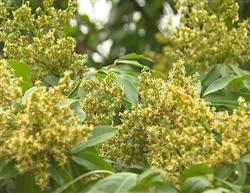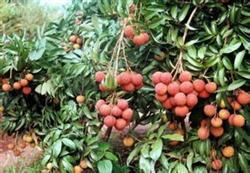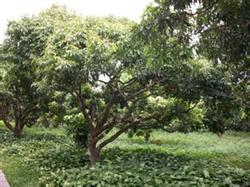Techniques of protecting Flowers and fruits in Litchi

Problem: at present, it is the season for litchi blossom, pollination, and fruit setting. Many farmers report that it is very difficult to protect flowers and fruits due to the cold weather this year. Damao Town, Wanning City, has nearly 300 mu of litchi fruit protection problem, and more than 200 mu of litchi are too old to bear fruit. Fruit farmers are too anxious to eat and sleep. I hope that litchi experts in our province can give technical guidance. Expert advice (litchi expert Chen Yeguang of the Fruit Research Institute of the Provincial Academy of Agricultural Sciences): first, do a good job in fertilizer and water management. The flowering period of litchi varies slightly due to different varieties and climates. Therefore, it is necessary to fertilize litchi at flowering stage. The standard is that 0.5 kg of urea, 0.5 kg of potassium chloride, 1 kg of cake fertilizer and 1 kg of soil fertilizer should be applied to the rhizosphere of each tree with 50 kg of fruit, which can effectively protect flowers and fruits. In addition, the method of spraying fertilizer outside the root can also be taken to improve the pollination and fertilization rate and reduce the role of falling flowers and fruits. It should be noted that litchi flowering to hanging fruit period, require the soil to maintain uniform moisture, do not be too dry and wet, timely drainage in the rainy season, dry days to appropriate irrigation (watering). Second, releasing bees or artificial pollination at flowering stage. For litchi without bee pollination, artificial pollination can be adopted, that is, when the male flower of litchi is in full bloom, gently shake the ear of the flower, collect the fallen pollen, mix it in the mixture of 10% sucrose and 0.01% boric acid, and spray it on the female flower of litchi, which can improve the pollination effect of litchi. If litchi florescence encounters overcast and rainy weather, we should pay attention to shake off the Rain Water accumulated on the ear of the flower to prevent the flowers from rotting and reduce the rate of pollination. Third, spraying plant auxin. Spraying 20ppm gibberellin before flowering can promote flowering; spraying 3ppm2.4D or 5ppm indolebutyric acid at full flowering can increase fruit setting rate; when young fruit is formed, spraying 3~5ppm2.4D plus 30ppm 92 ○ plus 0.3% urea and 0.2% potassium dihydrogen phosphate mixture can promote young fruit development and increase yield. Fourth, timely prevention and control of diseases and insect pests. The main diseases and insect pests in litchi flower and fruit stage are frost plague, Pentatomus, gall mite, night moth, beetle and insect emperor borer, which should be controlled in time. Aiming at 300 mu of litchi in Damao town, Chen Yeguang and other tropical fruit tree experts from the Provincial Academy of Agricultural Sciences went to the scene to study and diagnose, several targeted suggestions were also put forward for more than 200 mu of litchi: first, to select high-yielding mother plants as the female parent of bud grafting, to overcome the technical problems caused by long-distance transportation of shoots; second, to replace branches after March; third, to regraft in June-July; and fourth, to select budding workers. Strict selection of mother plants, strict selection of bud strips, strict selection of bud grafting rootstocks, strict technical operation.
- Prev

Five measures for re-grasping litchi after harvest
In May and June, some early-maturing litchi varieties were quickly harvested, and it was time to enter the post-harvest management period. Litchi results consume a lot of nutrients, picking fruit injured branches also make the tree body suffered an "internal injury". Therefore, after picking fruit, we should manage it in time to make litchi get nutrition supplement early and lay the foundation for high yield next year. Otherwise the tree...
- Next

Management of Litchi in August and September
All the postharvest management work of litchi is centered on the purpose of cultivating healthy autumn shoots. As the fruiting mother shoot of litchi in the coming year, the shoot period and the stout degree (nutrient accumulation level) will directly affect the shoot control, flower promotion and flower formation. From the production survey situation, at present, the city's litchi trees have generally been smoked...
Related
- Moge, come on! The staff of the peasant association in the producing area of cantaloupe were frightened when the crowd gathered.
- Causes and Solutions of low Fruit setting rate of Apple
- Symptoms and control measures of passion fruit virus disease
- Fruit growing lesson: how do apple orchards keep high yields?
- Can you build orchards in the mountains? What are the pros and cons?
- How to manage the coloring period of Crisson grape?
- This paper introduces the processing technology of two kinds of fig products.
- How much is a month for retired teachers in rural areas by 2020?
- How can strawberry planting increase sugar content? We should pay attention to management in many aspects.
- What are the cultivation techniques on how to improve the yield of golden fruit?

